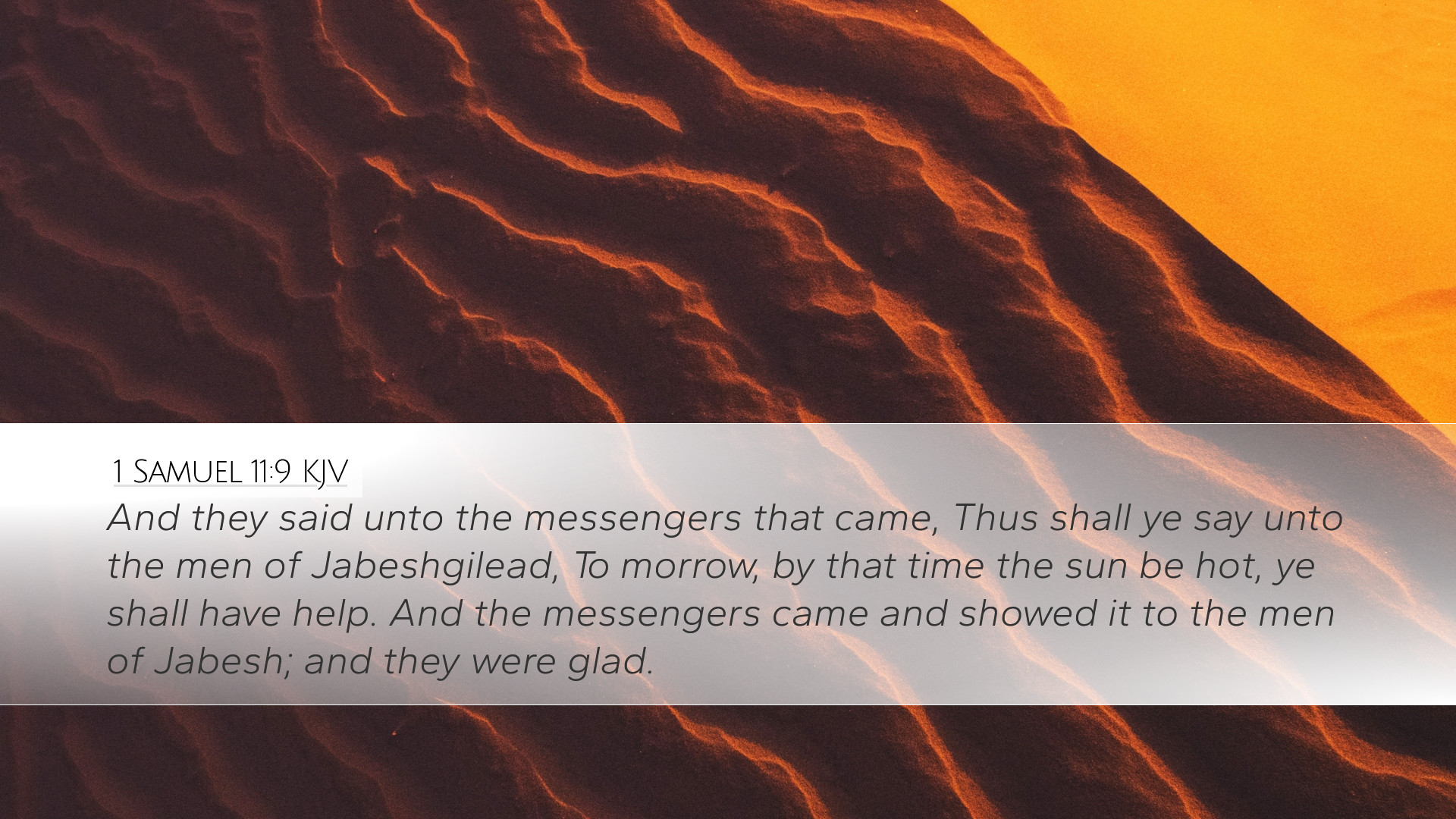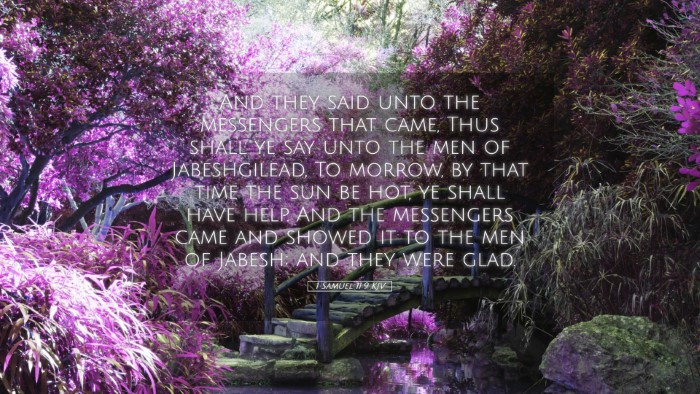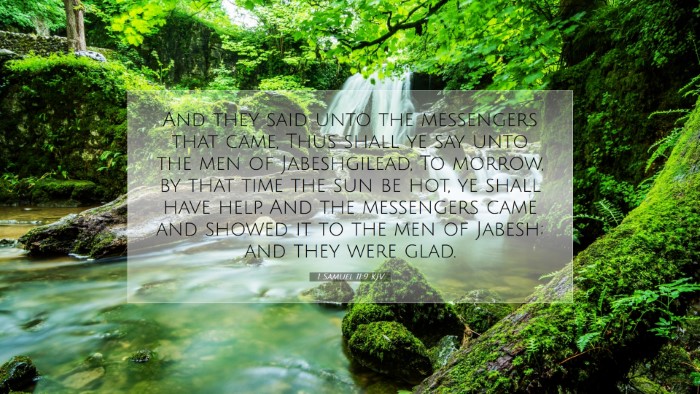Commentary on 1 Samuel 11:9
Bible Verse: "And they said unto the messengers that came, Thus shall ye say unto the men of Jabesh-Gilead; Tomorrow, by that time the sun be hot, ye shall have help. And the messengers came and shewed it to the men of Jabesh; and they were glad."
Contextual Background
This passage occurs during a tumultuous period in Israel's history, where the nation was facing external threats and internal struggles. Saul has been recently anointed king, but his leadership is still largely untested. The men of Jabesh-Gilead are in desperate straits due to the Ammonite siege, which sets the stage for Saul's first major act of salvation.
Commentary Insights
1. The Deliverance Promised
Albert Barnes offers valuable insight into the nature of the promise given to Jabesh-Gilead. He highlights the urgency and hope represented in the message from Saul’s envoys. The choice of words, "by that time the sun be hot," indicates a specific time frame that communicates both immediacy and certainty. This detail reassures the besieged inhabitants that relief is imminent and encourages them to endure their present difficulties with hope.
2. The Role of Messengers
Matthew Henry points out the importance of the messengers in relaying Saul’s message. Their role is crucial not only for communication but also for building morale among the people of Jabesh-Gilead. The gladness that overtakes the men upon hearing the news speaks to the power of hope, which can uplift spirits even in dire circumstances. Indeed, Henry emphasizes that even perilous moments can yield joy when hope is engaged through divine providence.
3. The Significance of Joy
The response of the men of Jabesh-Gilead encapsulates the transformative effect of receiving hope. Adam Clarke elucidates on this by comparing their initial despair with the joy of expected deliverance. Clarke interprets their gladness as a powerful testament to faith in action; it speaks volumes about the human condition that in times of distress, a word of hope can rejuvenate the spirit and rally people to stand firm until help arrives.
Theological Implications
1. The Sovereignty of God
This verse exemplifies the sovereignty of God in utilizing human agents to fulfill His divine purposes. The fact that Saul, a relatively new king, is used to rally a beleaguered community highlights God's overarching plan for Israel. It invites theological reflection on how God orchestrates events through unexpected means and personages.
2. Community and Solidarity
The people of Jabesh-Gilead not only receive a promise of deliverance but are also reminded of the importance of community solidarity. The message signifies a collective struggle against a common foe, illustrating the necessity of unity for overcoming adversity. This can be applied to modern congregations, emphasizing the need for communal faith and support in times of trial.
3. Hope in Divine Providence
The promise of salvation reflects the greater theme of hope found throughout Scripture. This passage encourages reflection on the character of God who hears His people’s cries and responds with assurance of help. It underscores a theological principle that divine intervention often arrives at points of human desperation, further inviting reflection on narratives of faith and the manifestation of hope against despair.
Conclusion
In analyzing 1 Samuel 11:9, we gain rich insights into the dynamics of divine assistance, the role of communication in community faith, and the profound significance of hope. As the men of Jabesh-Gilead were emboldened by the promise of help, so too are believers today encouraged to hold fast to the assurance of God’s faithfulness amid challenges. The interplay of despair and hope encapsulated in this verse invites pastors, students, and scholars to explore not only the historical context but its implications for personal and communal faith practice.


